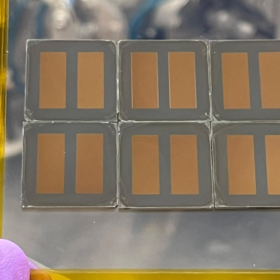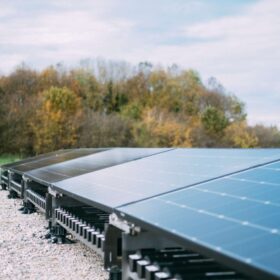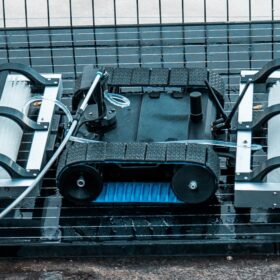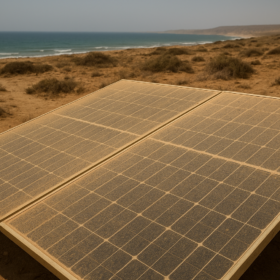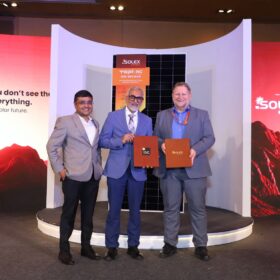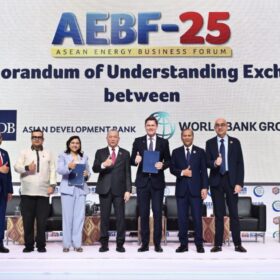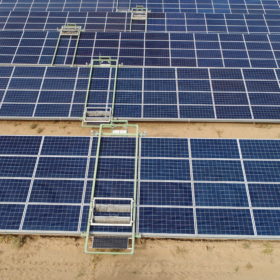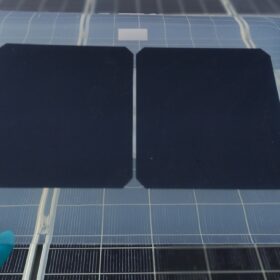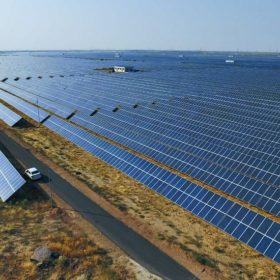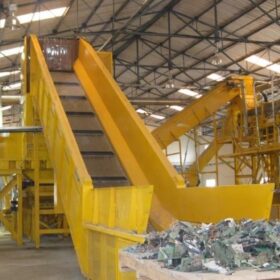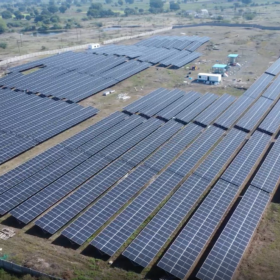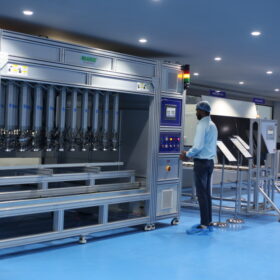NTU achieves high stability in 25.1%-efficient inverted perovskite solar cell
Researchers at Nanyang Technological University have demonstrated a method to integrate chemically inert low-dimensional interface materials into the fabrication of inverted perovskite solar cells. Their prototype solar cells retained over 93% of the initial power conversion efficiency of 25.1% after 1,000 hours of operation, and 98% after 1,100 hours at 85 C.
World’s first solar park featuring hydrogen-producing PV modules takes shape in Belgium
A 2 MW solar park in Wallonia, Belgium, will rely 50 kW of hydrogen-producing solar modules developed by Solhyd, a spin-off from KU Lueven. The installation will be the first demonstration of Solhyd’s technology at a commercially-relevant scale.
Musk proposes PV-powered AI satellite network to fight global warming
Elon Musk says a constellation of solar-powered artificial intelligence satellites could regulate the planet’s energy balance and limit global warming.
Rethinking transformer design for the energy transition
With renewables’ share in power generation expected to grow significantly, there will also be a push in the demand for next-generation transformers that are capable of handling the intermittent nature of solar, wind, and other non-polluting sources of energy. The grid of the future demands not only more transformers but smarter, adaptive, and sustainable designs that can support India’s ambitious renewable targets and fast-rising power demand.
French startup launches cleaning robots for solar PV shade structures
Solar panel cleaning equipment company Objectif Drone has launched a new 7 kg dual-brush cleaning robot with a speed of 5 km/h made for small and medium-sized PV installations.
The impact of dust on PV systems in arid coastal environments
A Saudi–Egyptian research team investigated the effects of four types of dust on photovoltaic panels in arid coastal environments, finding that power losses can reach up to 48%.
Solex Energy partners Germany’s ISC Konstanz, unveils rear-contact solar module concept
Solex Energy Ltd has partnered with Germany’s ISC Konstanz to upgrade its upcoming TOPCon cell line and adopt next-generation rear-contact and c-Si tandem/perovskite solar technologies. The manufacturer also unveiled its concept rear-contact solar module, which is set to enter commercial production by FY 2027.
ADB, World Bank commit $12.5 billion to ASEAN Power Grid plan
The Asian Development Bank (ADB) and World Bank have launched a $12.5 billion initiative to finance regional power interconnection in Southeast Asia under the ASEAN Power Grid program.
ENGIE launches startup program for innovation in renewable energy solutions in India
ENGIE has launched a program to collaborate with enterprise-ready startups in addressing operational and technological challenges across India’s renewable energy sector.
KAUST explores polymer alternatives to glass for solar panel covers
Researchers at King Abdullah University of Science and Technology (KAUST) have published a review that looks at polycarbonate sheets as an alternative to solar cover glass. Their findings indicate that this new materials have a combination of low weight, mechanical strength, optical transparency, and thermal resistance that is worthy of further investigation.
